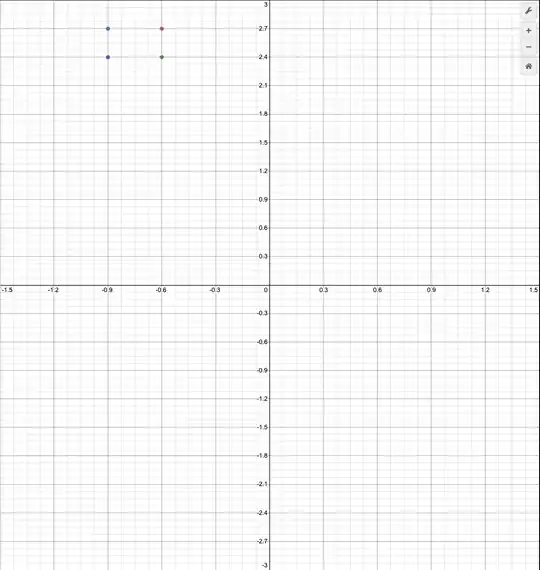 For example, I have a grid where the x-axis goes from -1.5 to 1.5, with an interval of 0.3 (i.e. -1.5 would go to -1.2 then -0.9 and so on).
For example, I have a grid where the x-axis goes from -1.5 to 1.5, with an interval of 0.3 (i.e. -1.5 would go to -1.2 then -0.9 and so on).
The y-axis goes from 3.0 to -3.0 with an interval of 0.3 as well.
How can I identify a unique square within this grid just by its vertices?
I tried to sum up the vertices which make up the square, but the sum of the vertices is not unique and can apply to a few other squares within the grid as well.
EDIT FOR CLARIFICATION:
Is there a way to use vertices like these to help me identify the square in the graph? I am designing a game where I want to be able to check if the box is currently occupied. I only have access to the vertices surrounding the box.